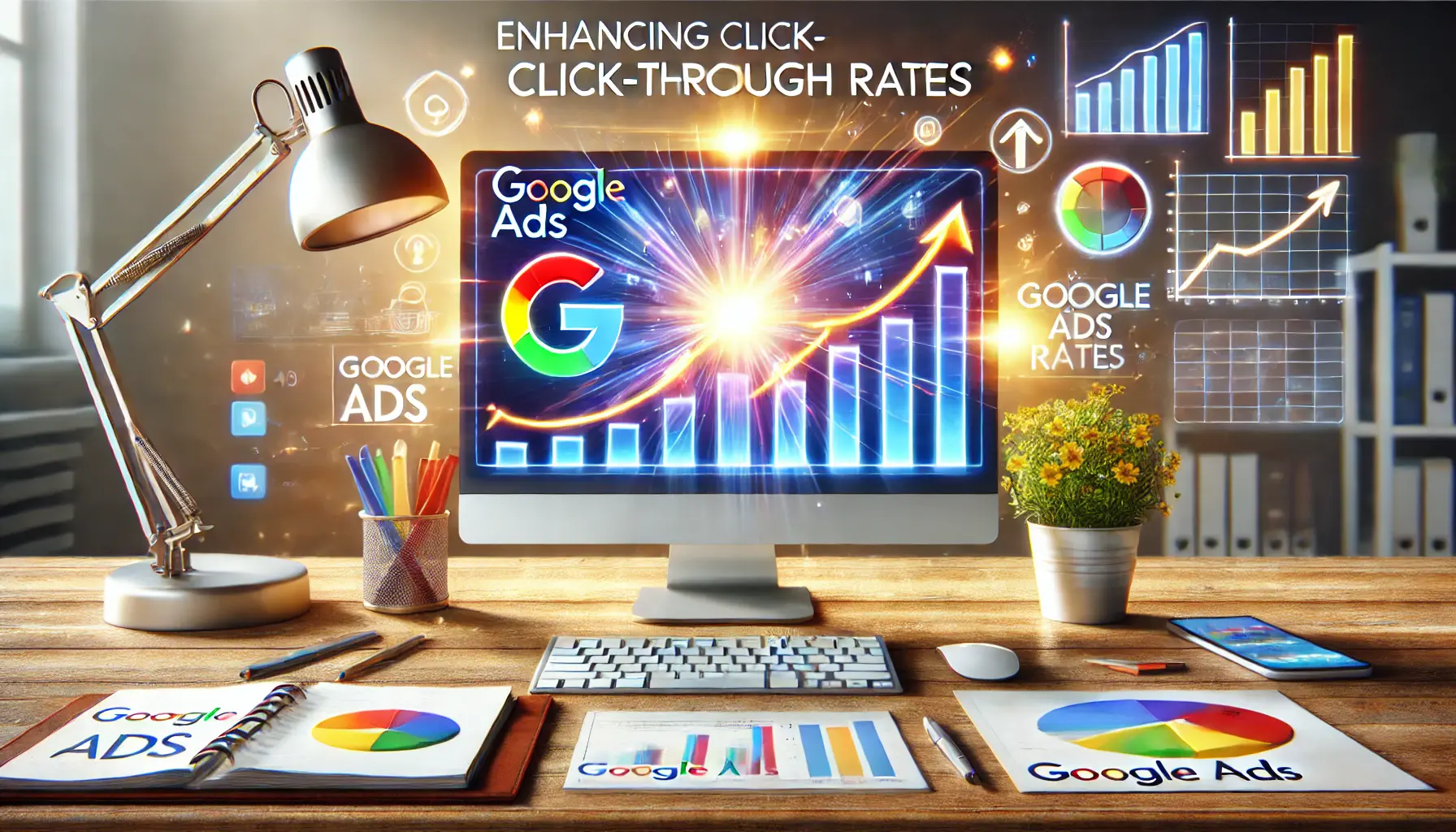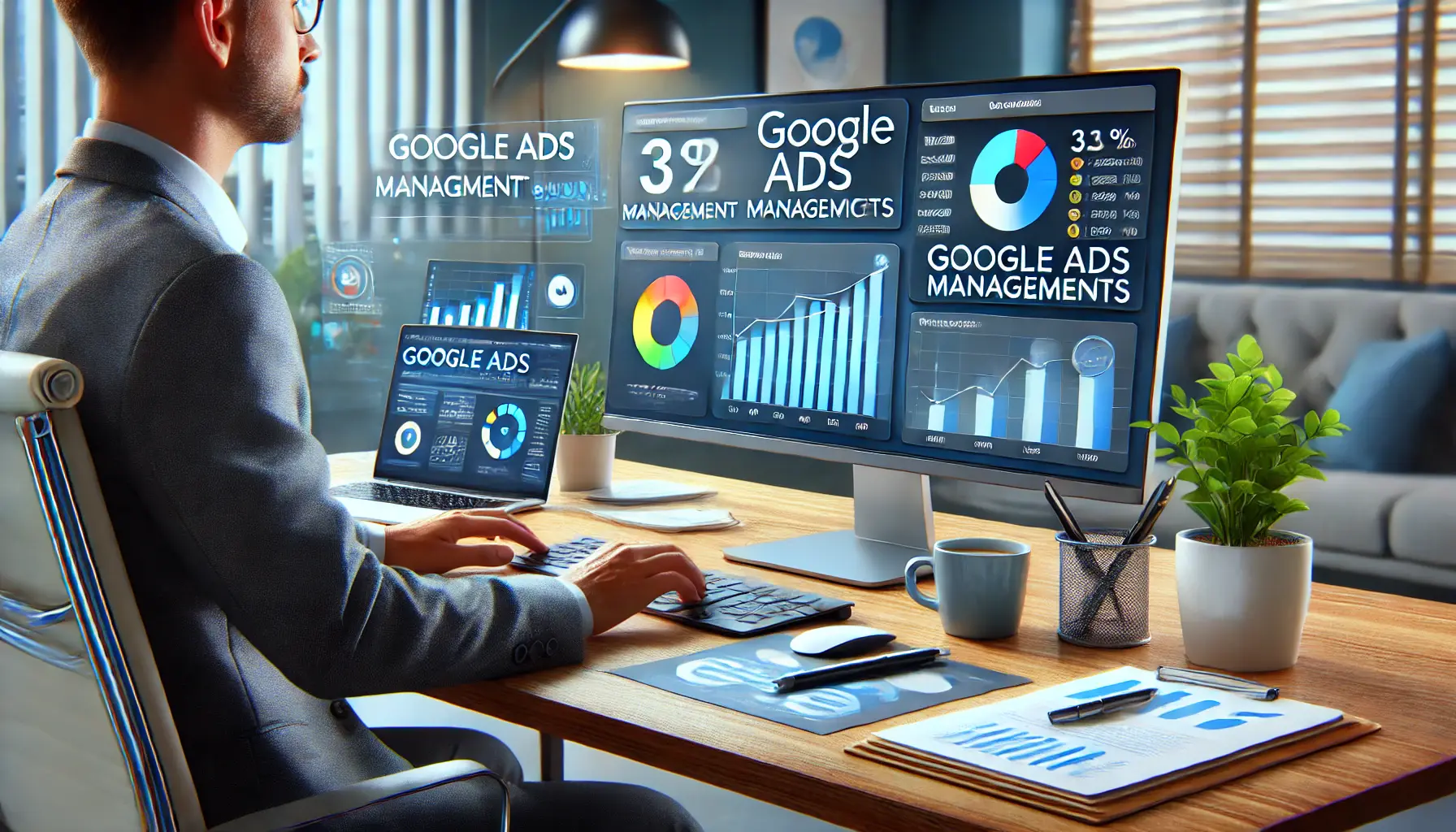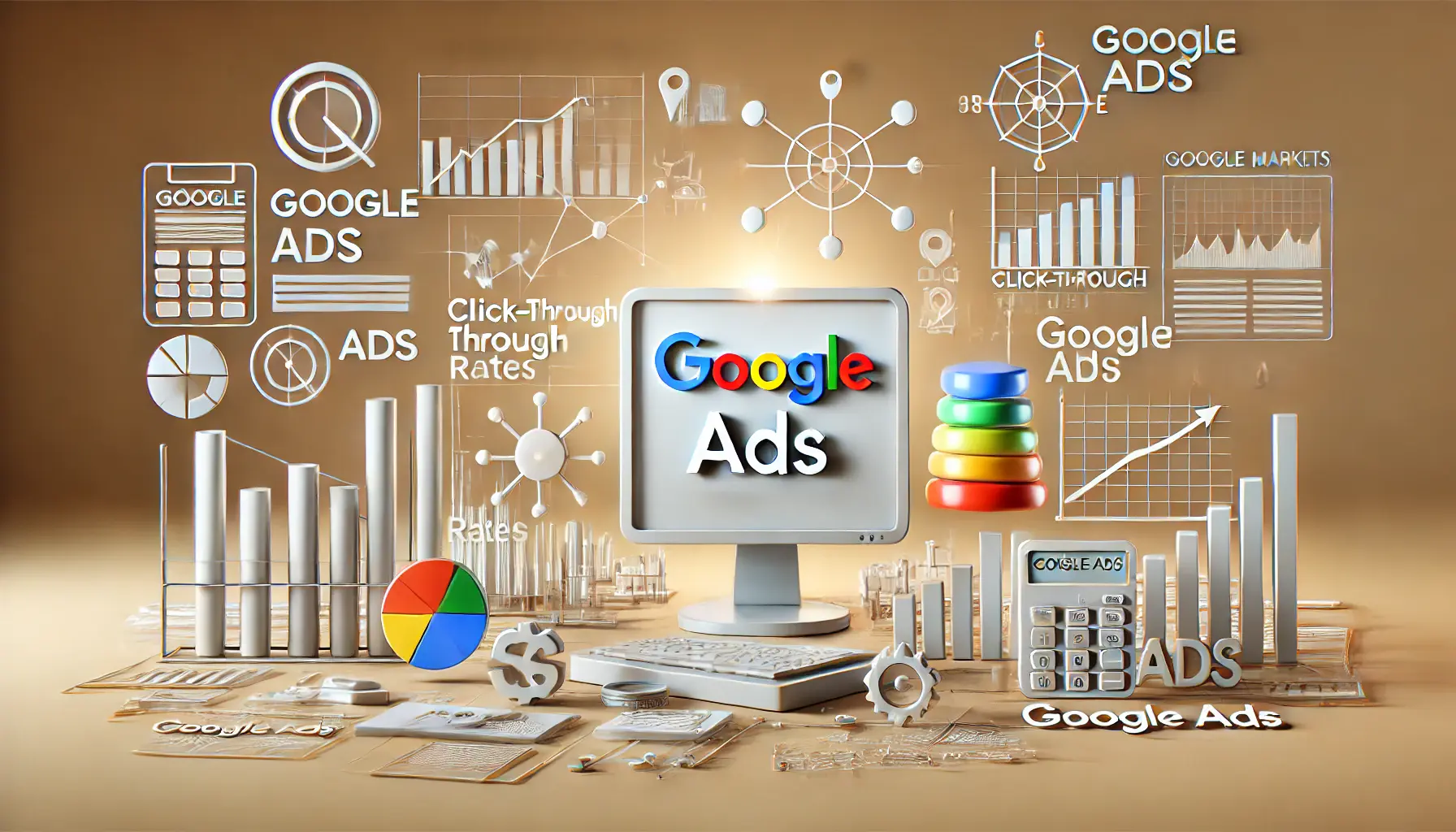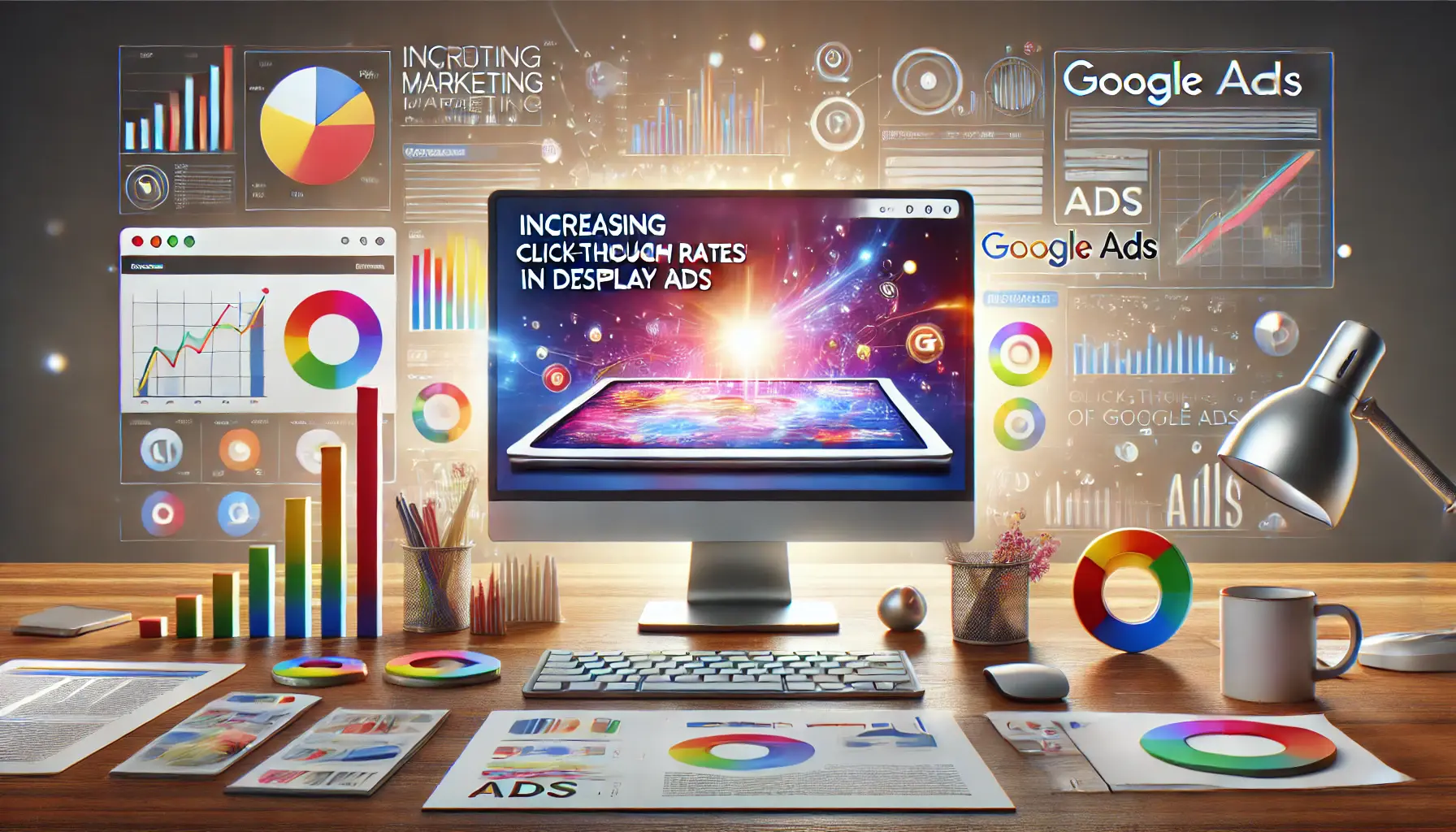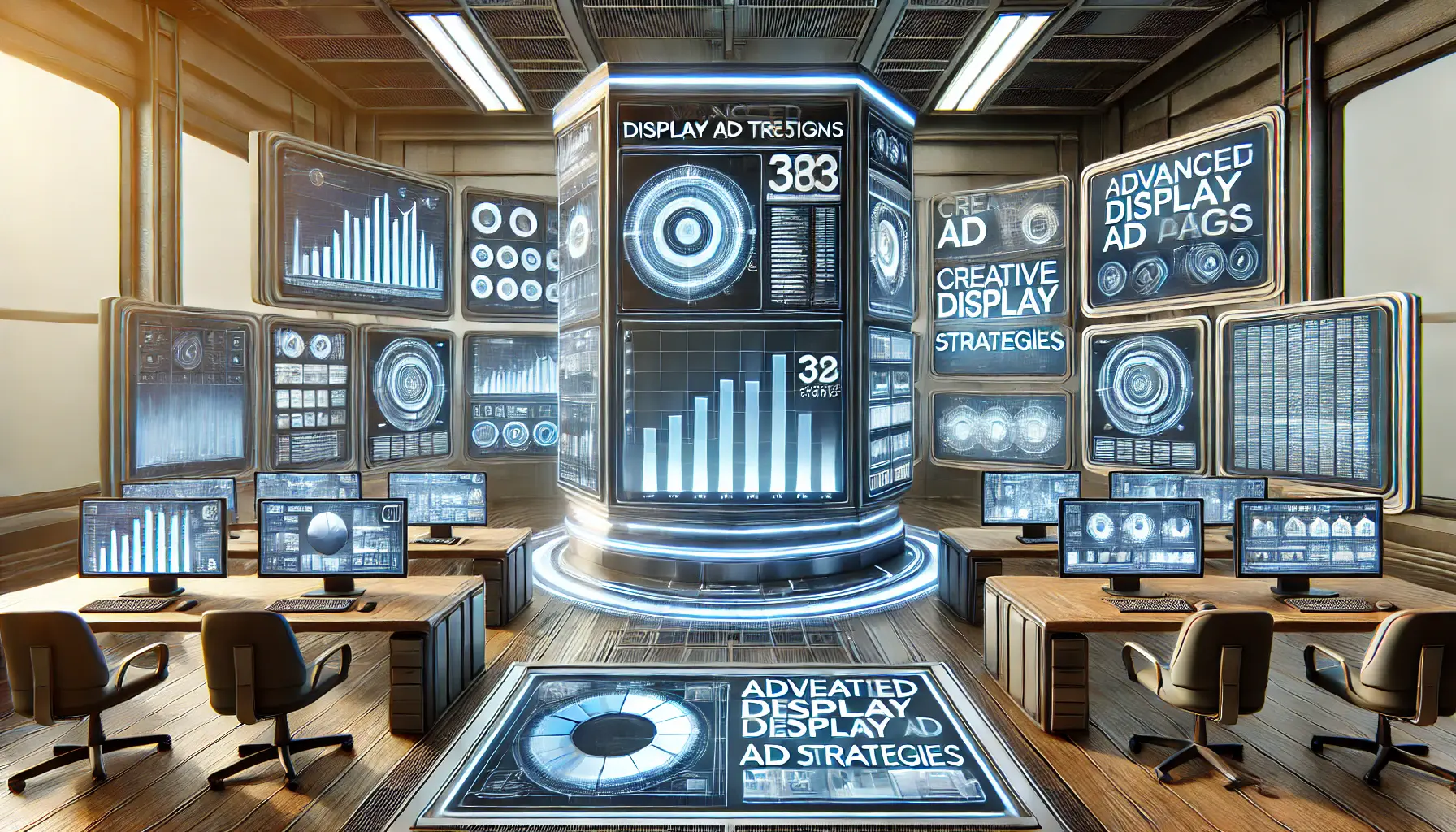Click-through rates (CTR) are a backbone of any successful Google Ads campaign.
They relate to how well your ads prompt users to click on them after coming across an ad.
Whether you’re a seasoned marketer or just beginning in the world of digital advertising, understanding and increasing your CTR is part of the key to success in getting better ad performance out of your campaigns and really maximizing your return on investment.
In this guide, we’ll dive into proven strategies to enhance your CTR and make your Google Ads campaigns more effective.
- Understanding Click-Through Rates in Google Ads
- Optimize Ad Copy to Boost Click-Through Rates
- Utilizing Audience Targeting for Better Click-Through Rates
- Enhancing Ad Design to Improve Click-Through Rates
- Analyzing and Iterating for Long-Term Success
- Achieving Exceptional Click-Through Rates: Key Takeaways
- Frequently Asked Questions About Improving Click-Through Rates in Google Ads
Understanding Click-Through Rates in Google Ads
First, it’s essential to understand what click-through rates actually are and why they’re so important.
CTR is determined by the number of clicks on your ad divided by the impressionsThe number of times an ad is displayed to users on a screen., expressed as a percentage.
For example, if your ad gets 10 clicks out of 100 impressions, your CTR is 10%.
This is a major indicator of how well your ad is working at engaging your target audience.
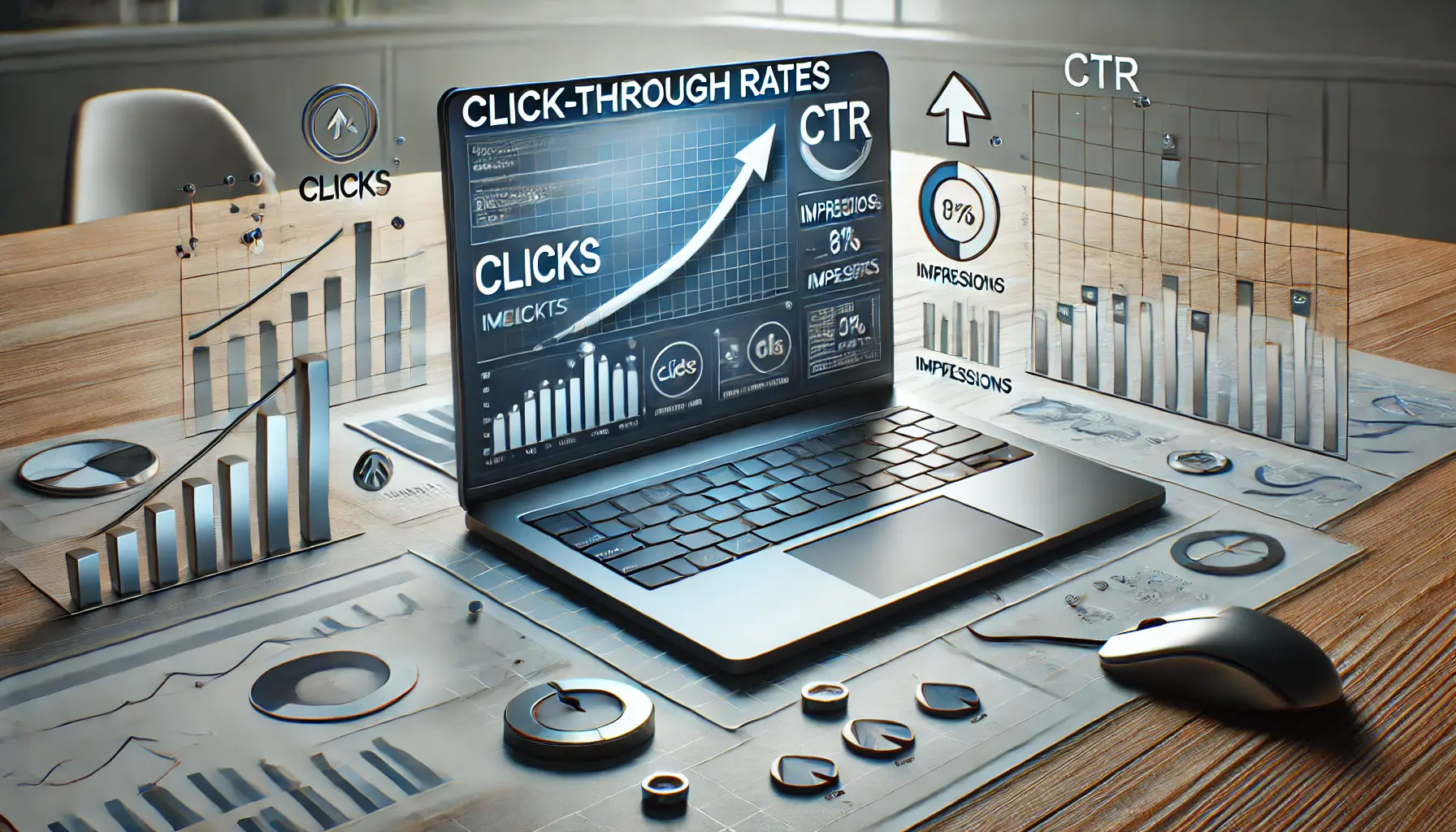
Visual representation of the significance of click-through rates in digital marketing campaigns.
What Are Click-Through Rates and Why They Matter
Click-through rates reflect the relevance and appeal of your ads to users.
A higher CTR indicates that more people are finding your ad compelling enough to click on it.
This not only helps you drive more traffic to your website but also signals to Google that your ad is relevant, which can lead to better ad placements and lower costs per click.
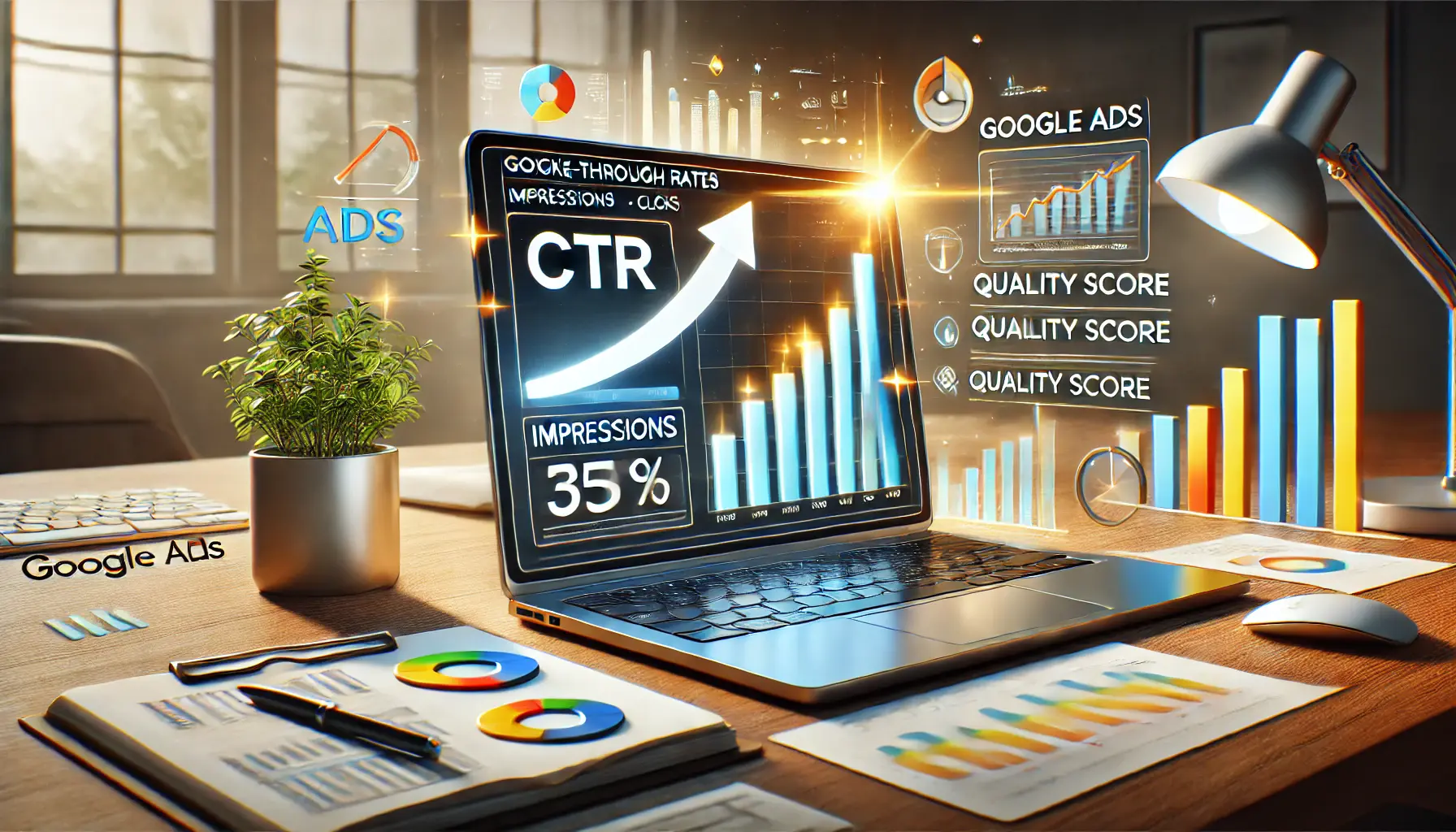
Visual representation of how higher click-through rates positively affect Google Ads performance.
How CTR Impacts Your Google Ads Performance
CTR is a critical factor in determining your Quality ScoreA Google Ads metric that evaluates ad relevance, CTR, and landing page experience., a metric used by Google to rank ads.
Higher Quality Scores result in better ad positions and lower costs, meaning a high CTR directly improves the cost-effectiveness of your campaigns.
Ads with low CTRs can lead to reduced visibility and increased expenses, making it harder to compete in the digital advertising space.

Visual representation of industry benchmarks for click-through rates and data analysis in digital marketing.
Industry Benchmarks for Click-Through Rates
To gauge your CTR performance, it’s helpful to compare it against industry benchmarks.
While the average CTR varies by industry, a CTR of 2-5% is generally considered good for most campaigns.
However, some niches like e-commerce or travel may achieve even higher rates.
Regularly benchmarking your campaigns can help you identify areas for improvement and set realistic goals.
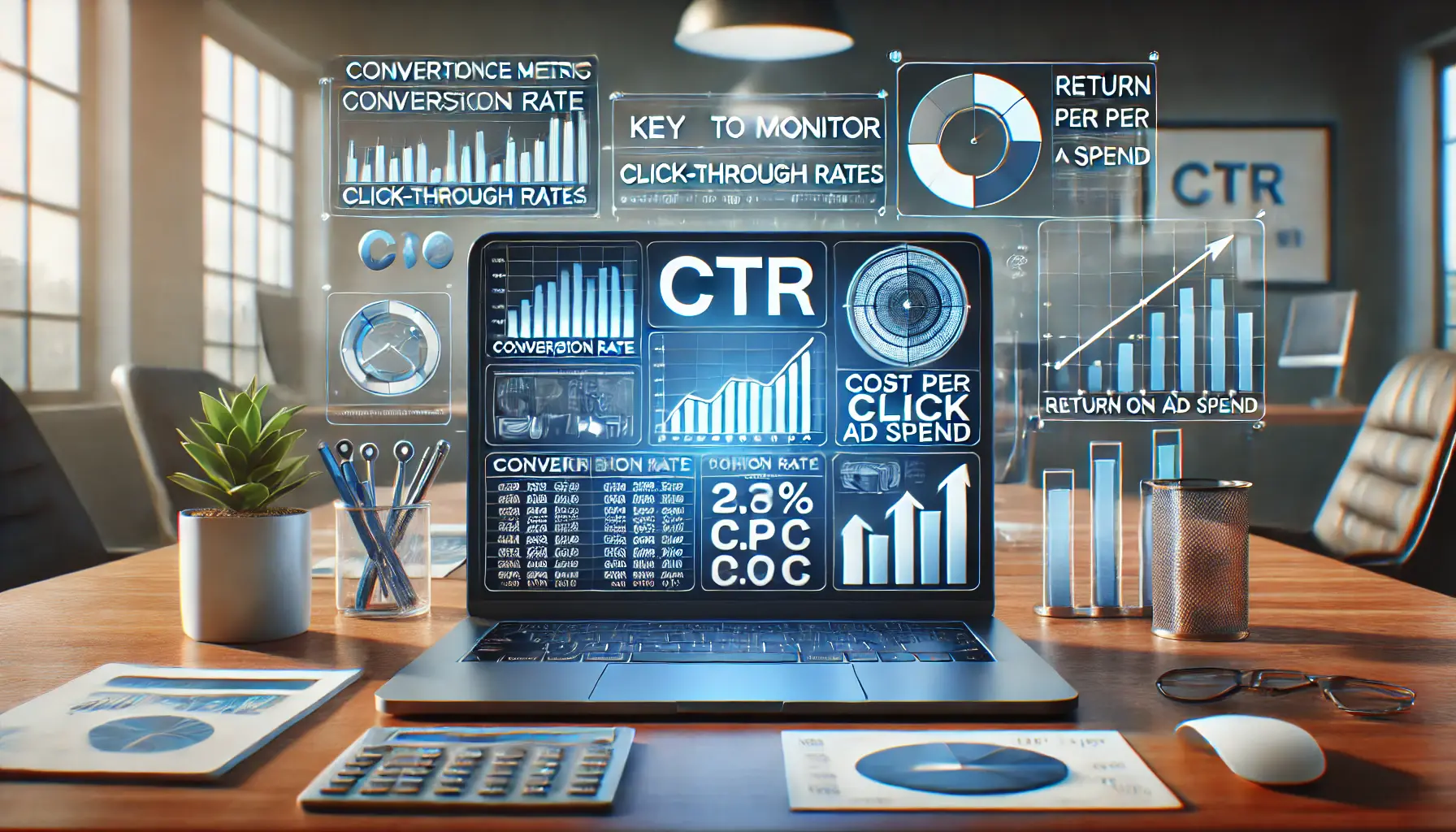
undefined
Key Metrics to Monitor Alongside CTR
While CTR is a very important metric, it is not the only thing one should focus on.
Complementary metrics such as conversion rates, cost per click (CPC), and return on ad spend (ROAS) provide a much fuller picture of a campaign’s success.
These, if tracked alongside CTR, ensure that any increase in clicks will produce real value for your business.
- Conversion Rate: Tracks how many clicks lead to desired actions, such as purchases or sign-ups.
- Cost Per Click (CPC): Helps evaluate the financial efficiency of your campaign.
- Return on Ad Spend (ROAS): Measures the revenue generated for every dollar spent.
Understanding these metrics will equip you to optimize your campaigns effectively and achieve sustainable growth.
Click-through rate (CTR) is a critical metric that measures ad relevance and engagement, directly influencing your campaign’s success.
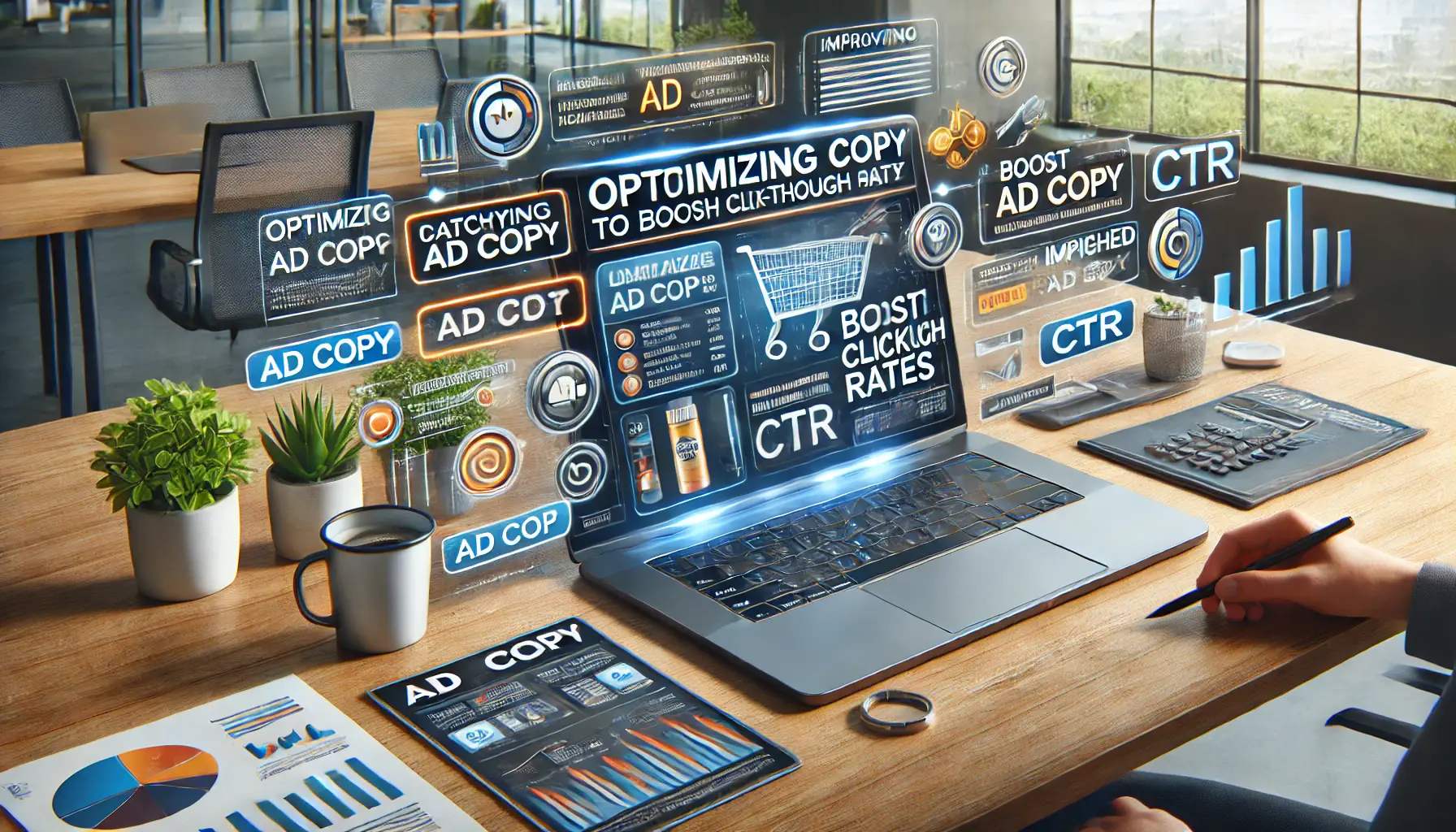
Visual representation of optimizing ad copy with engaging elements to boost click-through rates.
Optimize Ad Copy to Boost Click-Through Rates
Enhancing your ad copy is crucial for improving click-through rates (CTR) in your Google Ads campaigns.
Compelling and relevant ad copy not only attracts your target audience but also encourages them to engage with your content.
Let’s explore effective strategies to optimize your ad copy and boost your CTR.

Visual representation of the process of crafting impactful and attention-grabbing headlines in digital marketing.
Crafting Attention-Grabbing Headlines
Your headline is the first impression users have of your ad.
To make it impactful:
- Incorporate Keywords: Include relevant keywords in alignment with user search queries for better ad relevance.
- Highlight USPs: Highlight what makes your product or service different from others.
- Use Numbers or Statistics: Specific figures make your headline more compelling and credible.
For example, instead of saying, “High-Quality Running Shoes,” you might say, “Top 10 Running Shoes for Marathon Training.” This approach provides specificity and appeals directly to the user’s intent.

undefined
Using Emotional Triggers in Ad Text
Connecting with your audience on an emotional level can significantly enhance engagement.
Consider the following:
- Address Pain Points: Identify and speak to the challenges your audience faces, offering your product as the solution.
- Use Persuasive Language: Words like “exclusive,” “limited time,” or “proven” can create a sense of urgency and trust.
- Tell a Story: Brief narratives can make your ad more relatable and memorable.
For instance, an ad stating, “Struggling with back pain?
Discover our ergonomic chairs designed for comfort,” directly addresses a common issue and presents a solution.

Visual representation of incorporating compelling calls-to-action in digital marketing to drive higher engagement and conversions.
Incorporating Calls-to-Action for Higher Engagement
A clear and compelling call-to-action (CTA) directs users toward the desired action.
To craft effective CTAs:
- Be Direct: Employ action-oriented language, such as “Shop Now,” “Sign Up Today,” or “Get Your Free Quote.”
- Create Urgency: Phrases like “Limited Offer” or “Only a Few Left” can prompt immediate action.
- Ensure Relevance: Align your CTA with the user’s intent and the ad’s content.
For example, a CTA such as “Download Your Free eBook Now” clearly states the action and the benefit, encouraging users to click.
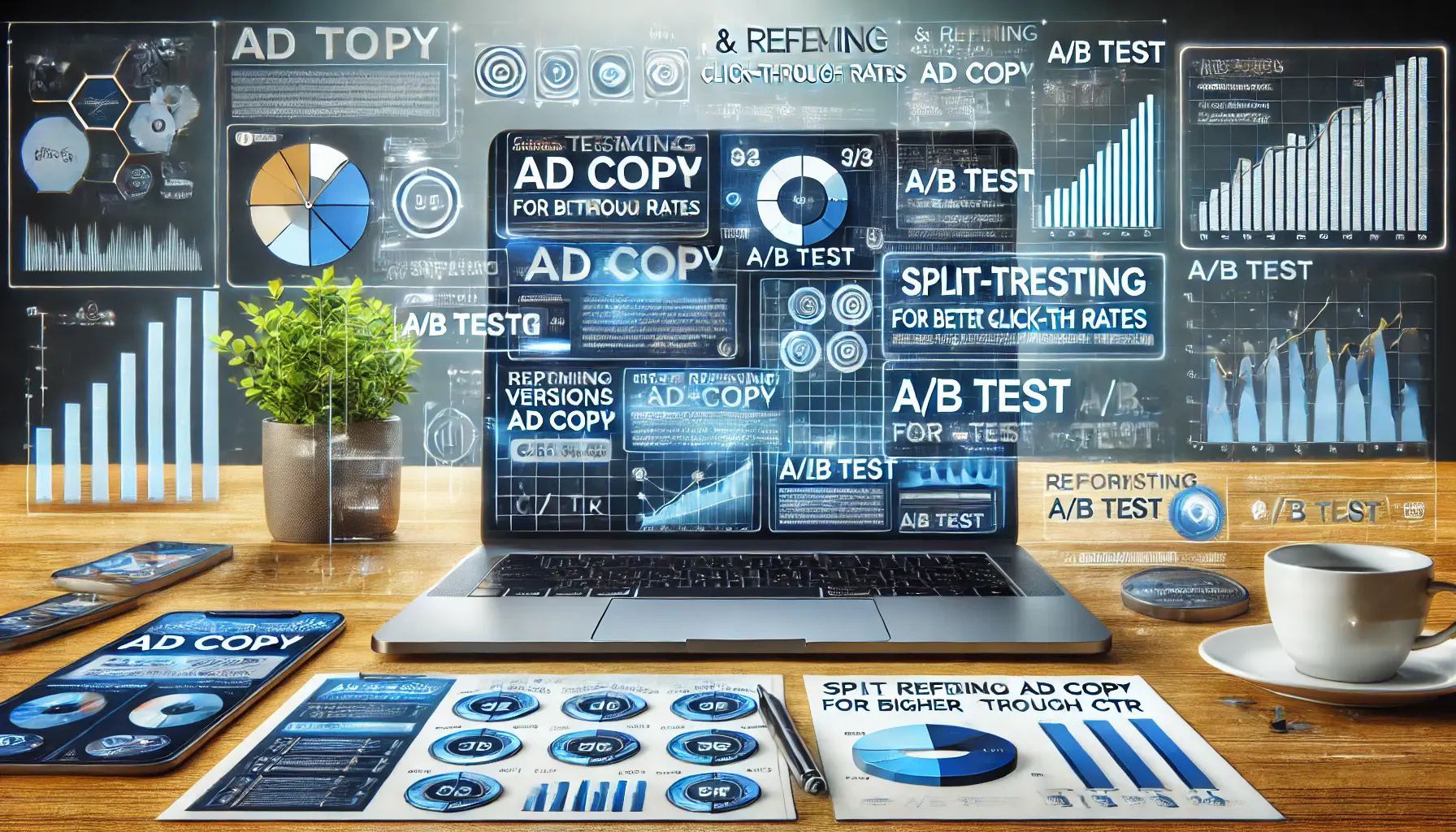
Visual representation of testing and refining ad copy through A/B testing for higher click-through rates.
Testing and Refining Ad Copy for Better CTR
Continuous testing is vital for optimizing ad performance.
Implement these practices:
- A/B Testing: Create multiple versions of your ad copy to determine which elements resonate most with your audience.
- Analyze Performance Metrics: Keep track of CTR, conversion rate, and other important metrics to analyze their effectiveness.
- Iterate Based on Data: Employ insights gathered to continuously refine your ad copy.
By systematically testing different headlines, descriptions, and CTAs, you can identify what drives the highest engagement and apply these learnings to future campaigns.
Optimizing your ad copy is an ongoing process that requires attention to detail and a deep understanding of your audience.
By putting these strategies into practice, you can create ads that capture attention and drive meaningful interactions beyond just the click-through, ultimately boosting your click-through rates and overall campaign success.
Crafting attention-grabbing headlines and using emotional triggers are proven methods to enhance CTR and attract your target audience effectively.

undefined
Utilizing Audience Targeting for Better Click-Through Rates
Effectively targeting your audience is essential for enhancing click-through rates (CTR) in your Google Ads campaigns.
By reaching the right people with tailored messages, you can significantly increase engagement and drive more qualified traffic to your site.
Let’s explore strategies to optimize audience targeting and boost your CTR.

Visual representation of audience segmentation with filters like age, gender, and location for effective digital advertising.
Segmenting Your Audience Effectively
Targeting specific segments of your audience facilitates better ad delivery.
Consider the following approaches:
- Demographic Targeting: Focus on variables such as age, gender, income level, and educational attainment to reach users who are most likely to be interested in your offerings.
- Geographic Targeting: Target users based on their location to address regional preferences and needs.
- Behavioral Targeting: Analyze user behaviors, such as past purchases or browsing habits, to deliver relevant ads.
By implementing these segmentation strategies, you can create more relevant ads that resonate with each group, leading to higher CTR.
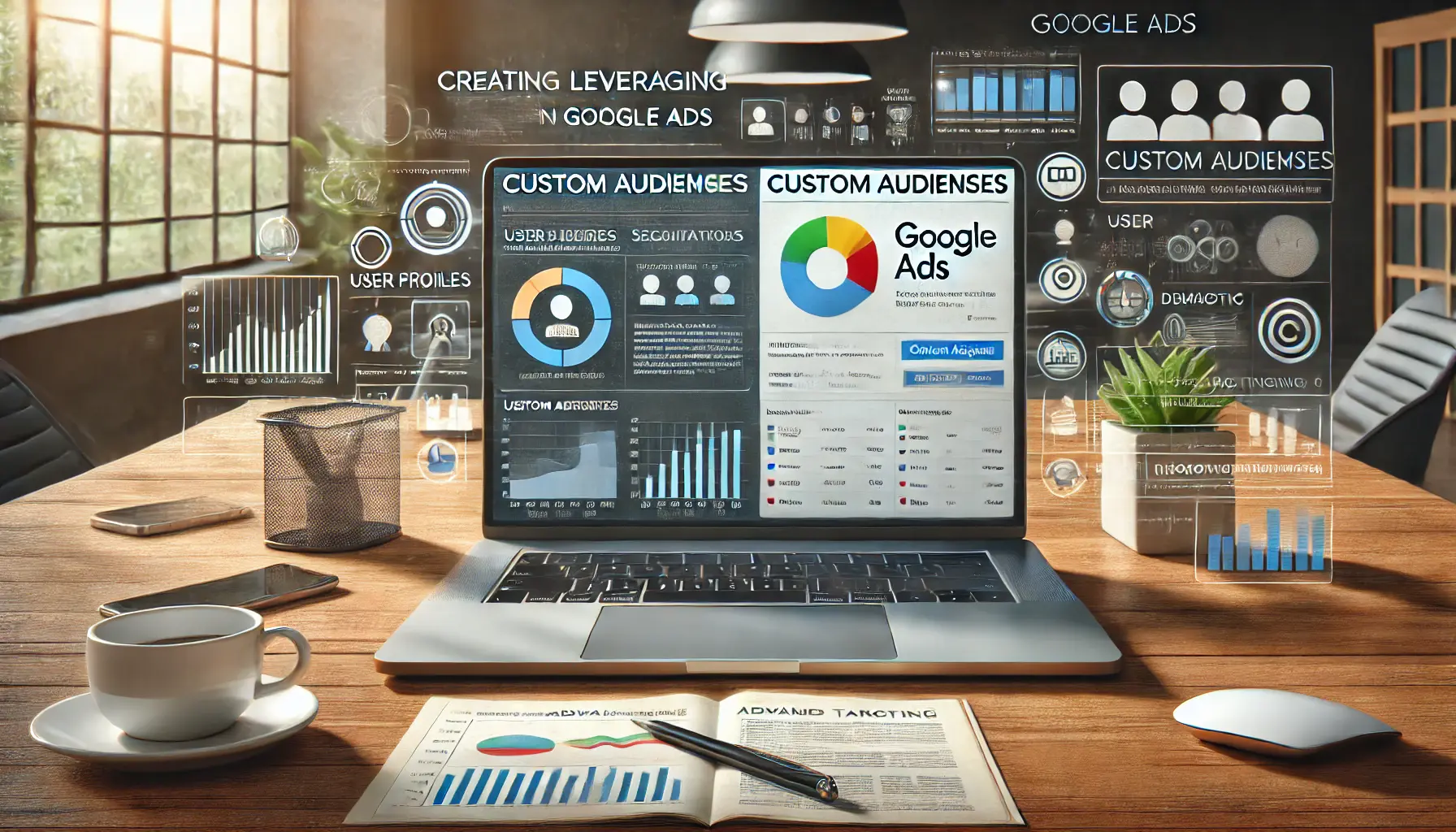
Visual representation of leveraging custom audiences and advanced targeting features in Google Ads for effective campaigns.
Leveraging Custom Audiences in Google Ads
Google Ads offers robust tools to create custom audience segments:
- Custom Segments: Build audiences based on specific keywords, websites visited, or apps used, allowing for precise targeting.
- Your Data Segments: Utilize your existing customer data to re-engage past visitors or customers with tailored ads.
Employing these features enables you to reach users who have shown interest in topics related to your products or services, enhancing the likelihood of engagement.

Visual representation of understanding demographic and behavioral data for targeted and optimized digital advertising.
Understanding Demographic and Behavioral Data
Analyzing demographic and behavioral data provides insights into your audience’s preferences and actions:
- Demographic Insights: Identify which demographic groups are most responsive to your ads and adjust your targeting accordingly.
- Behavioral Analysis: Examine patterns such as browsing history and past interactions to predict future behavior and tailor your ads.
Utilizing this data allows for more informed decisions in your targeting strategy, leading to more effective ad campaigns.
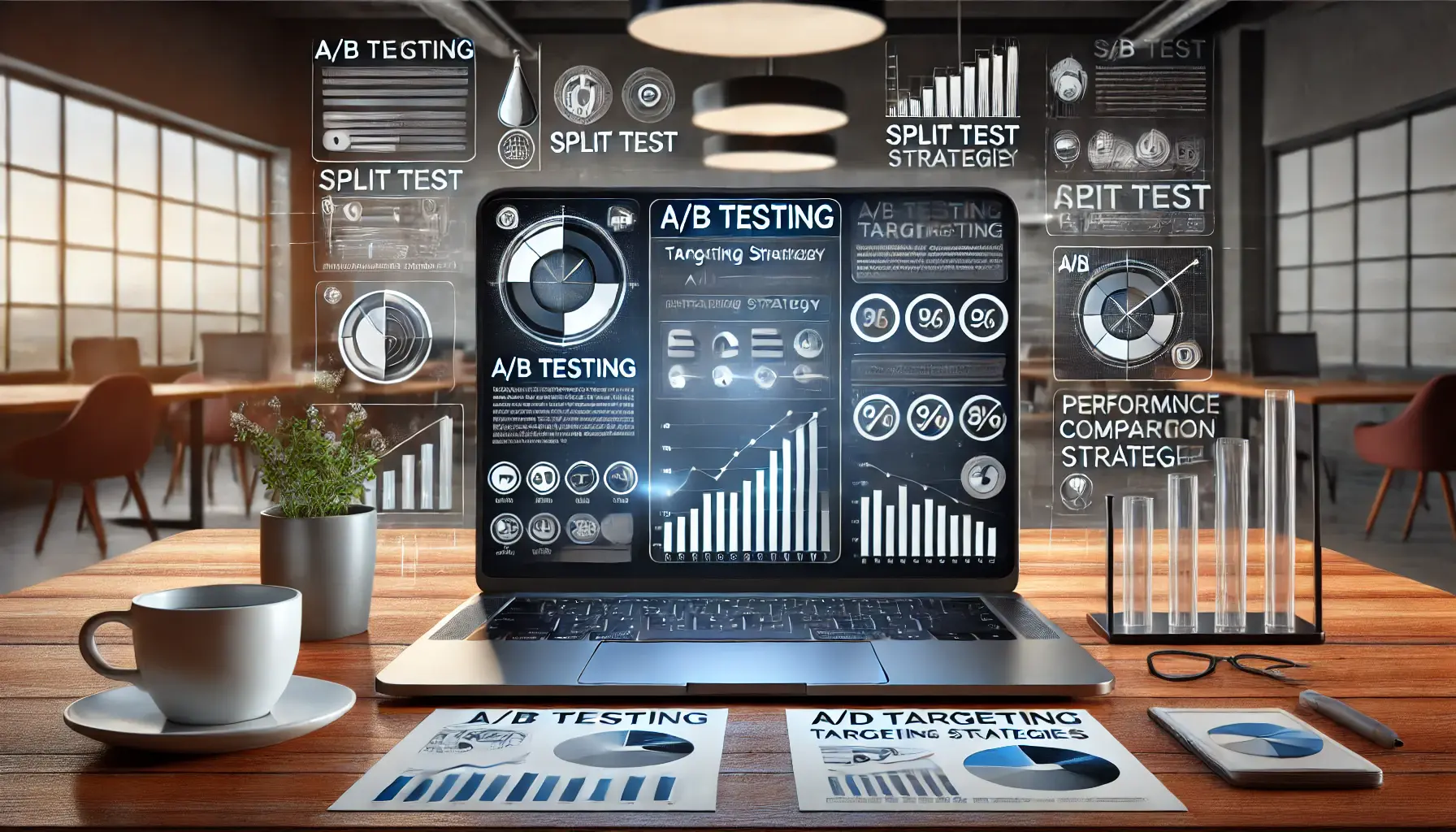
Visual representation of A/B testing targeting strategies for optimizing ad campaigns in digital advertising.
A/B Testing Targeting Strategies
Continuous testing is vital to refine your audience targeting:
- Split Testing: Generate various versions of your ad targeting different parameters to ensure that the best CTR is achieved with the chosen approach.
- Performance Monitoring: Continuously monitor performance indicators, such as CTR, conversion rate, and return on ad spend, to evaluate performance.
- Iterative Optimization: Use the insights gained to constantly adjust and refine your targeting strategies iteratively.
This is a great way to understand what works best to reach and engage your target audience through a process of testing and reevaluation.
Applying these audience targeting strategies to your Google Ads campaigns will drive personalization of ad experiences, improve engagement, and increase click-through rates, ultimately driving success for your advertising efforts.
Segmenting audiences based on demographics and behaviors ensures ads reach the right users, significantly boosting engagement and CTR.

Visual representation of enhancing ad design with creative tools to improve click-through rates in digital advertising.
Enhancing Ad Design to Improve Click-Through Rates
Creating visually appealing and effective ad designs is crucial for increasing click-through rates (CTR) in your Google Ads campaigns.
A well-designed ad captures attention and encourages users to engage with your content.
Let’s explore strategies to enhance your ad design and boost your CTR.

undefined
Utilizing High-Quality Images and Videos
Incorporating high-quality visuals can significantly impact user engagement:
- Eye-Catching Visuals: Use clear, high-resolution images or videos that are relevant to your product or service to attract attention.
- Consistency: Ensure that your visuals align with your brand identity and message for a cohesive user experience.
For example, using professional images of your product in action can help users visualize its benefits, making them more likely to click on your ad.

Visual representation of implementing responsive ad designs for digital marketing campaigns across multiple devices.
Implementing Responsive Ad Designs
Responsive ad designs adapt to various devices and screen sizes, providing a seamless user experience:
- Mobile Optimization: Design ads to look perfect on mobile devices, as most users now access content through their smartphones.
- Flexible Layouts: Create ads that adjust to different screen orientations and resolutions to maintain visual appeal across devices.
By ensuring your ads are responsive, you can reach a broader audience and provide a consistent experience, regardless of the device used.

Visual representation of including a strong and compelling call-to-action in digital ads to drive conversions and engagement.
Including a Clear and Compelling Call-to-Action
A clear call-to-action (CTA) guides users toward the desired action.
The key elements of an effective CTA are:
- Action-Oriented Language: Use verbs that encourage immediate actions, such as “Discover,” “Learn More,” or “Get Started.”
- Visibility: Design your CTA to stand out by using contrasting colors and readable fonts.
For instance, a CTA button with the text “Shop Now” in a contrasting color can draw attention and prompt users to click.

Visual representation of maintaining simplicity and focus in ad design to enhance clarity and user engagement.
Maintaining Simplicity and Focus in Design
A clean and focused ad design prevents user distraction:
- Minimalist Approach: Avoid clutter by focusing on essential elements that convey your message effectively.
- Whitespace Utilization: Use whitespace strategically to highlight key components and improve readability.
This ensures that users quickly grasp your message, enhancing their interaction with the ad.
Improving the design of your ad through high-quality images, responsive layouts, captivating CTAs, and a focused approach can significantly boost your click-through rates, leading to better results from your Google Ads campaigns.
Incorporating high-quality visuals and responsive designs creates appealing ads that capture attention and improve CTR across devices.

Visual representation of the iterative process of analyzing and improving digital marketing performance for long-term success.
Analyzing and Iterating for Long-Term Success
Consistent analysis and iteration are vital for sustaining and enhancing the click-through rates (CTR) of your Google Ads campaigns.
By diligently monitoring performance metrics and making informed adjustments, you can ensure your advertising efforts remain effective and aligned with your business objectives.
Let’s delve into strategies for achieving long-term success through continuous optimization.

Visual representation of monitoring key performance indicators (KPIs) to optimize digital marketing campaigns.
Monitoring Key Performance Indicators (KPIs)
Regularly tracking KPIs provides insights into your campaign’s health and areas for improvement:
- Click-Through Rate (CTR): Measures the percentage of users who click on your ad after viewing it, indicating ad relevance and appeal.
- Conversion Rate: Assesses the proportion of clicks that result in desired actions, such as purchases or sign-ups, reflecting the effectiveness of your landing pages and overall strategy.
- Cost Per Click (CPC): The average amount spent per click, which helps you manage and optimize your advertising budget.
- Return on Ad Spend (ROAS): Revenue generated for every dollar spent on ads, giving you a clear picture of your campaign’s profitability.
By focusing on these metrics, you can identify trends, measure success, and pinpoint areas needing adjustment.
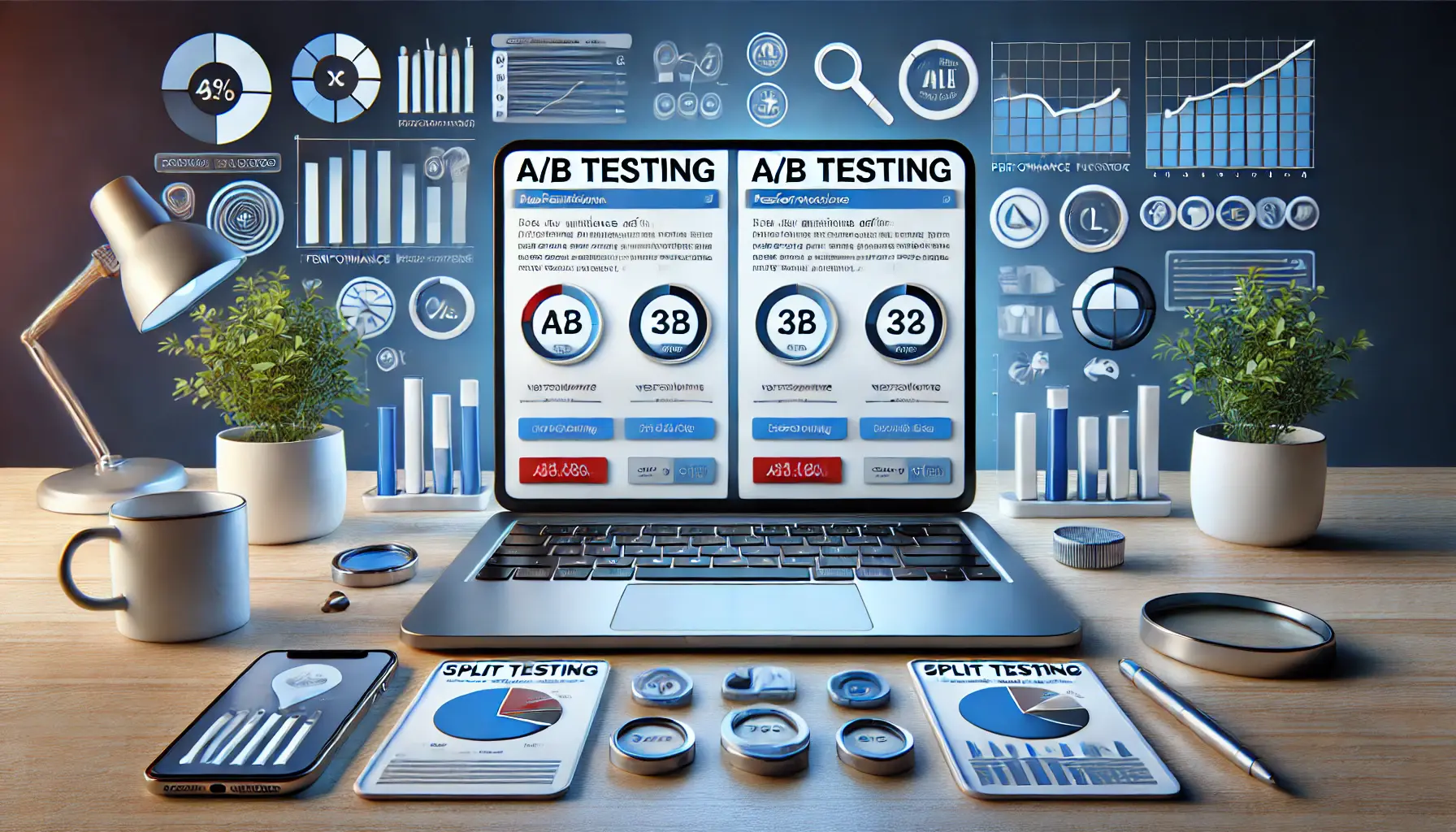
Visual representation of conducting A/B testing to compare ad variations and optimize digital marketing campaigns.
Conducting A/B Testing
A/B testing enables you to use data to improve ad creatives:
- Creative Variations: Create variants of your ad with slight changes in elements like headlines, visuals, or CTAs to see what resonates well with your target audience.
- Controlled Testing: Test only one factor at a time to isolate the specific variable’s performance, yielding more accurate insights.
- Performance Analysis: Compare the results of each variation to identify the most effective components, guiding future ad development.
Regular A/B testingA method of comparing two versions of an ad or webpage to determine which performs better. fosters continuous improvement, leading to higher CTR and overall campaign success.

Visual representation of utilizing the search terms report to analyze and optimize ad targeting in digital marketing.
Utilizing the Search Terms Report
The Search Terms ReportA Google Ads report that shows the actual queries triggering your ads. in Google Ads reveals the actual search queries triggering your ads:
- Identification of High-Performing Terms: Discover which search terms drive clicks and conversions, and include them as keywords for more precise targeting.
- Add Negative Keywords: Identify irrelevant terms that trigger your ads and add them to the negative keyword section to avoid wasted spend.
- Refine Match Types: Adjust match types based on performance to include or exclude specific searches, enhancing relevance and efficiency.
Leveraging this report helps refine your keyword strategy, ensuring your ads reach the most interested users.

undefined
Adjusting Bidding Strategies
Optimizing your bidding approach can improve ad placement and cost-effectiveness:
- Manual Bidding: Set bids based on individual keyword performance, allowing precise control over spending and positioning.
- Automated Bidding: Utilize Google’s Smart Bidding strategies, such as Target CPA or Target ROAS, to automatically adjust bids for optimal results.
- Bid Adjustments: Modify bids for specific demographics, locations, devices, or times to focus your budget where it’s most effective.
Regularly reviewing and adjusting your bidding strategies ensures your ads remain competitive and cost-efficient.

Visual representation of continuous learning and adaptation in digital marketing through education and knowledge acquisition.
Continuous Learning and Adaptation
The digital advertising landscape is dynamic; staying informed is crucial:
- Industry Trends: Keep abreast of changes in consumer behavior, market conditions, and advertising technologies to adapt your strategies accordingly.
- Competitor Analysis: Monitoring competitors’ ads and performance highlights opportunities and threats, informing your optimization efforts.
- Training Resources: Blogs, webinars, and courses are crucial for continuous learning, improving your knowledge and skills in managing Google Ads.
Embracing a growth mindset will enable you to address changes effectively to maintain or improve your CTR over time.
By systematically analyzing performance data, running experiments, and keeping up with industry trends, you can achieve long-term success with your Google Ads campaigns and maintain relevant, engaging, and effective ads.
Continuous analysis of KPIs and A/B testing ad strategies ensures sustained growth in CTR and overall campaign effectiveness.
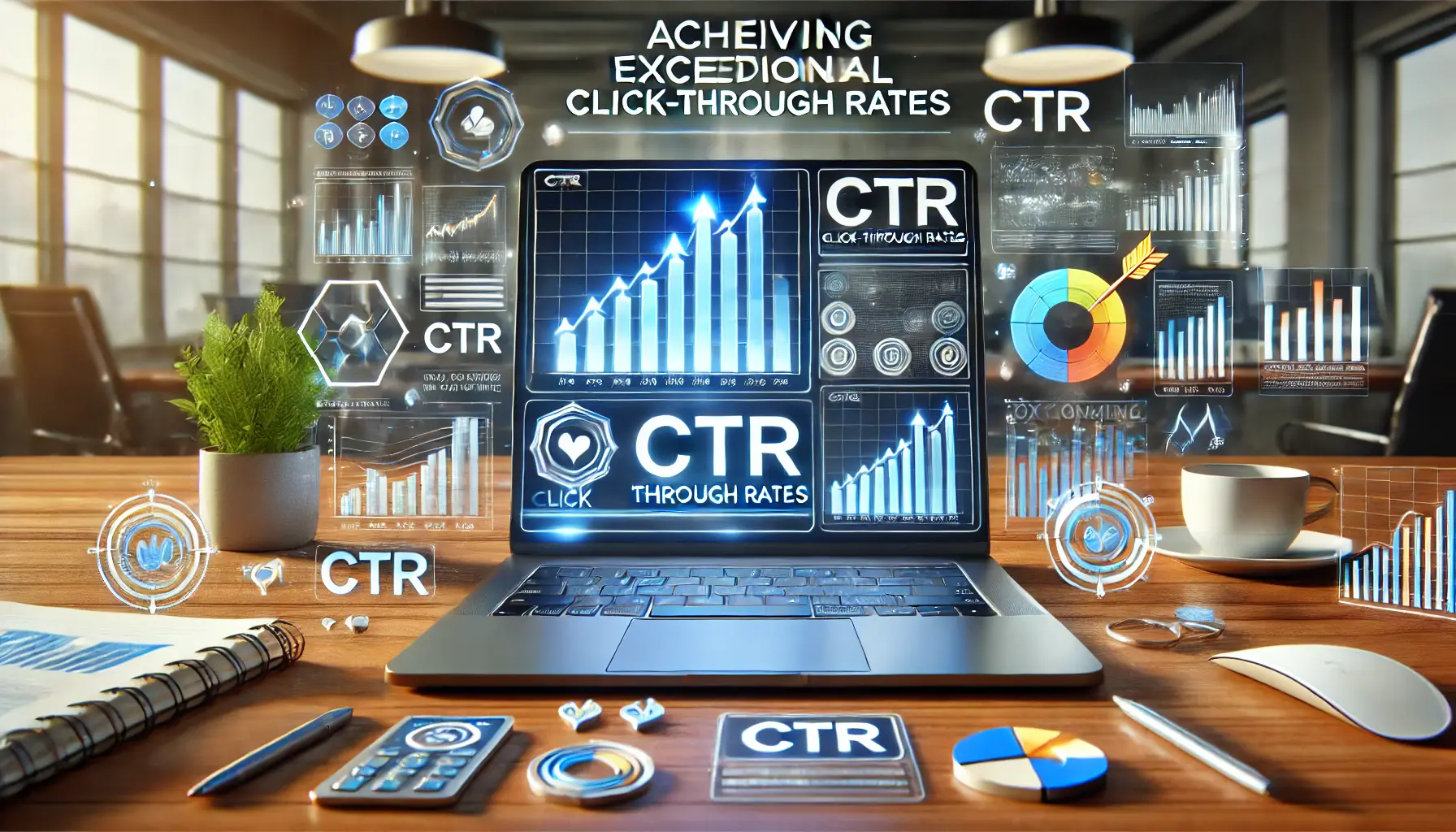
undefined
Achieving Exceptional Click-Through Rates: Key Takeaways

Visual representation of the journey to better click-through rates, with milestones in digital marketing optimization.
The Journey to Better Click-Through Rates
Improving your Google Ads campaigns’ click-through rates (CTR) requires a strategic approach that integrates creativity, data analysis, and continuous adaptation.
Each element, from ad design to audience targeting, plays a vital role in creating ads that resonate with your audience and drive results.
Let’s revisit the key strategies covered in this guide to ensure you achieve long-term success.

Visual representation of key strategies for enhancing click-through rates with data analysis and optimization tools.
Key Strategies for Enhancing CTR
- Understanding Click-Through Rates: Recognizing the importance of CTR as a measure of ad relevance and appeal, and monitoring it alongside complementary metrics like conversion rates, CPC, and ROAS.
- Optimizing Ad Copy: Crafting compelling headlines, using emotional triggers, and incorporating clear calls-to-action that encourage user engagement.
- Audience Targeting: Utilizing segmentation, custom audiences, and demographic insights to reach the right users with tailored messages that boost engagement.
- Enhancing Ad Design: Employing high-quality visuals, responsive layouts, and minimalist design principles to capture attention and improve readability.
- Analyzing and Iterating: Continuously tracking performance metrics, conducting A/B tests, refining keyword strategies, and adjusting bidding tactics to optimize results.

Visual representation of the role of continuous improvement with incremental progress in digital marketing campaigns.
The Role of Continuous Improvement
Maintaining high CTRs is an ongoing process that requires regular evaluation and adaptation.
The digital advertising landscape is dynamic, and staying ahead means embracing changes, learning from performance data, and leveraging industry trends.
Success comes from a commitment to refining strategies and responding effectively to the evolving needs of your audience.

Visual representation of final thoughts and reflection in digital marketing, with completed reports and decision-making elements.
Final Thoughts
Click-through rates are not just a number; they represent how well your ad interacts with your audience.
The approaches described in this guide can help you set up effective campaigns that start with attracting clicks and lead to valuable actions.
After all, every click you get with Google Ads must count toward accomplishing your business goals, achieved through a balanced mix of creative imagination and data-driven decision-making.
Consistently applying the discussed strategies ensures long-term improvement in CTR and successful Google Ads campaigns.

Visual representation of frequently asked questions about improving CTR in Google Ads, with analysis tools and question mark icons.
Your campaigns can be managed by an agency specialized in Google Ads, check out our service page.
Frequently Asked Questions About Improving Click-Through Rates in Google Ads
A good CTR varies by industry, but generally, a rate between 2% and 5% is considered effective.
However, some sectors may experience higher averages.
A higher CTR indicates ad relevance, leading to better Quality Scores, improved ad positions, and potentially lower costs per click.
Enhance ad copy with compelling headlines, use high-quality visuals, implement clear calls-to-action, and ensure precise audience targeting to boost CTR.
Ad relevance is crucial; aligning your ad content with user intent increases engagement and click-through rates.
Yes, ad extensions provide additional information and interactive elements, making ads more appealing and often leading to higher CTRs.
Quality Score is influenced by CTR; higher CTRs can improve Quality Scores, enhancing ad rank and reducing costs.
Effective audience targeting ensures your ads reach the right users, increasing the likelihood of engagement and higher CTRs.
A/B testing different ad elements allows you to identify what resonates with your audience, enabling optimization for better CTR.
Absolutely, optimizing ads for mobile devices ensures a seamless user experience, which can significantly boost CTR.
